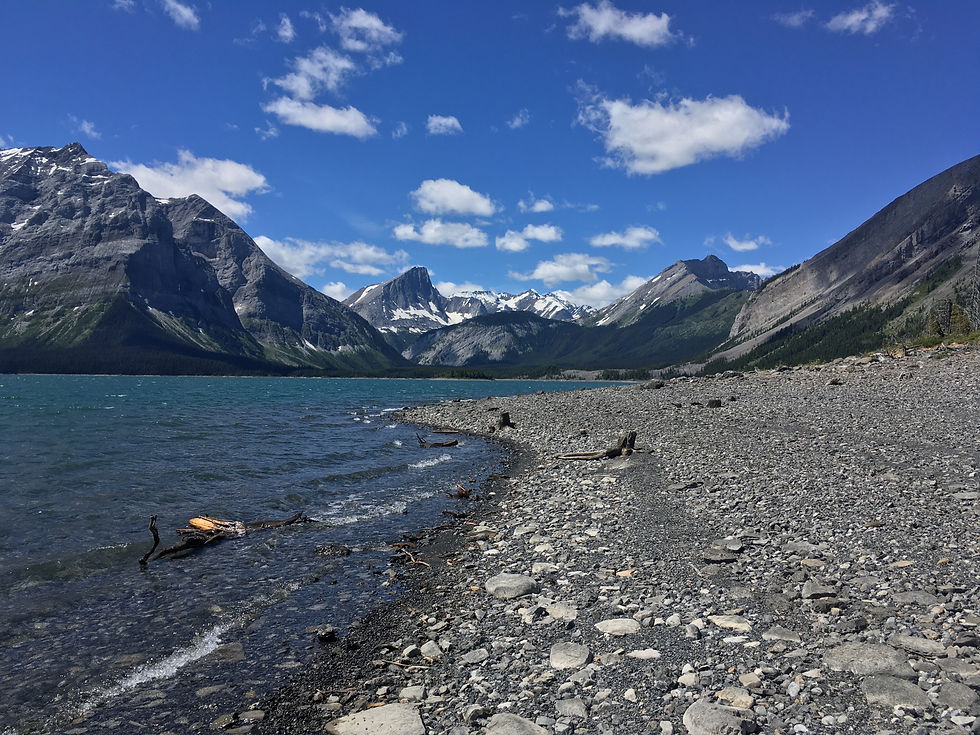Alberta's ‘Parks’ are now in a different ministry than ‘Protected Areas’ – is that good or bad?
- guy1896
- Jan 17, 2023
- 3 min read
An op-ed for the Edmonton Journal (November 2022)

The latest provincial cabinet shuffle in Alberta – as usual – led to some slicing and dicing of the ministries.
Of note, staff in two ministries – Environment and Parks and Agriculture, Forestry and Rural Economic Development – found themselves re-sprinkled across the new ministries of Environment and Protected Areas, and Forestry, Parks, and Tourism.
A big question that arose was why are ‘Protected Areas’ now separate from ‘Parks’? And more importantly, is this a good thing or not?
Some context is important.
First, Alberta ministries change names more than people in witness protection programs.
Alberta was the first province in the country to create a Ministry of the Environment (back in 1971). Since that time it has worn many names, and its functions shared across many ministries.
Second, elements of this change were in play before October, both within the Alberta government and across the world. The concept of nature protection has been undergoing big changes in trying to adapt to a busier, fuller planet.
Good or Bad?
So, good or bad? Well, here’s how it could be good.
The idea of a protected area has evolved a lot in the last decade. For example, we’re becoming more aware that sometimes we protect biodiversity by accident. Historic shipwreck reserves leave marine wildlife unmolested; similarly, sacred groves protected for their cultural importance, maintain habitat.
In 2010, the international Convention on Biological Diversity accidentally coined a term for those land and water management mechanisms that protect biodiversity in the course of doing something else. They said these “other effective area-based conservation measures” were a key part of the puzzle. Policy wonks capitalized the first letter in each word, and OECMs were born. We’ve been struggling to define them ever since.
In Alberta, grazing leases and forest management areas and even weapons testing ranges provide some of the best wildlife habitat in the province. And those existing management regimes protects it.
So are these protected areas? If a tree is protected in the forest and there’s no one around to hear it get called ‘protected’ … well, you get the point.
Looking at nature and biodiversity protection across all Crown lands, regardless of their bureaucratic designation, is critically important. A protected areas agency that is mandated by a function (biodiversity protection) and not labels (provincial park) could be just what conservation in the 21st century needs.
On the other hand, here’s how the ministerial re-org could be bad.
Contrary to what you might have heard recently, Alberta’s Provincial Parks are not primarily for recreation.
The Provincial Parks Act says Parks are established for the “preservation of Alberta’s natural heritage”, and “conservation of flora and fauna.” Recreation isn’t mentioned until the fourth “purpose” bullet, and only after geological, cultural, historical, archeological, anthropological, paleontological, ethnological, and ecological values.
Will the “protection” mandate now be considered something that folks in ‘that other ministry’ are supposed to worry about? Will Alberta Parks staff be told their job is just washrooms and parking lots and facilitating ever more recreational pressure?
Provincial Parks are still Crown lands and still protected areas. Will Environment and Protected Areas have a seat at the table when there’s talk about conservation of wildlife and habitat in Provincial Parks?
Determining Good or Bad
What would determine whether we have the good or the bad scenario?
I think it will be based on three things.
First, even though it has its name in lights now, it’s not clear if is there a real commitment to ‘protected areas.’ Is this an empowering move, or just one that marginalizes?
Second, will we get this OECM thing figured out? And by that I mean, will we be able to understand, define, and operationalize both this new concept and this whole new approach to protecting nature and biodiversity?
Third, how will the ministries interface? Will they share power when it comes to decisions around areas that are both parks and protected areas? Will they collaborate? Will they ignore each other?
As always, this has everything to do with the political direction that is given. Alberta’s public service has many talented, committed, and knowledgeable people in these ministries. How will they be directed?



Comments